The national flag of Senegal is a vibrant and deeply symbolic emblem, reflecting the nation's rich history, its pan-African identity, and its aspirations for unity, progress, and independence. Adopted on August 20, 1960, the flag came into being shortly after Senegal gained full independence from France. Its design is a powerful visual narrative, incorporating colors that are widely recognized across the African continent while adding a unique central element that speaks to Senegal's specific cultural and spiritual values.
Design and Symbolism: A Tricolor of Pan-Africanism and National Identity
The flag of Senegal consists of three equal vertical bands of green, yellow, and red. A prominent green five-pointed star is centrally placed on the yellow band. This combination of colors and the star holds profound meanings:
-
Green Stripe (Hoist): The leftmost stripe is green. In the context of the Senegalese flag, green holds multiple significant interpretations. Primarily, it symbolizes hope and the nation's rich agricultural resources, particularly its fertile lands. For Muslims, who constitute the majority of Senegal's population, green is also the color of Islam, representing faith and prosperity. For Christians, it evokes a sense of hope, while for animists, it represents fertility and the earth. This multi-layered symbolism ensures that the green stripe resonates with all segments of Senegalese society.
-
Yellow Stripe (Middle): The central stripe is yellow, a color that brightly represents wealth and prosperity. This refers not only to the nation's abundant natural resources but also to the wealth of the arts, literature, and intellectual pursuits that characterize Senegalese culture. Yellow also signifies the golden glow of sunshine, a source of energy and the collective effort of the Senegalese people to build their nation. Furthermore, it symbolizes the readiness of the population to sacrifice to protect the nation and its progress.
-
Red Stripe (Fly): The rightmost stripe is red, a powerful color associated with sacrifice, determination, and the nation's struggle for independence. It commemorates the blood shed by those who fought for Senegal's freedom and sovereignty. Red also embodies the vibrant spirit and the will of the Senegalese people to overcome challenges and advance towards a brighter future. It can also be seen as a symbol of socialist aspirations and the determination to achieve a higher level of development.
-
Green Star (Central on Yellow Stripe): The central green five-pointed star is arguably the most distinctive feature of the Senegalese flag. It is prominently placed on the yellow band, ensuring its visibility. The star symbolizes unity, hope, and the sovereignty of the Senegalese nation. Its five points are often interpreted as representing the five continents, signifying Senegal's openness to the world and its place in global affairs. The green color of the star specifically echoes the green of the first stripe, reinforcing the themes of hope and Islamic faith (for Muslims). It also represents the future and the determination of the Senegalese people to build a strong and unified nation.
Dimensions and Proportions:
The official proportions of the Senegalese flag are a width-to-length ratio of 2:3. The three vertical stripes are of equal width. The green star in the center of the yellow stripe is geometrically precise, ensuring it is perfectly centered and proportionate to the overall flag design. These standardized dimensions contribute to the flag's distinctive appearance and its consistent representation across various contexts.
History and Evolution: From Federation to Independent Nationhood
The history of the Senegalese flag is closely tied to the country's decolonization process and its brief membership in the Mali Federation.
-
Colonial Period (Pre-1959): Before gaining autonomy, Senegal was a French colony. The French Tricolor (blue, white, red) was the official flag flown throughout the territory.
-
Mali Federation Flag (1959-1960): In 1959, Senegal joined with the French Sudan (present-day Mali) to form the Mali Federation. The flag adopted for this short-lived federation also featured the pan-African colors: vertical stripes of green, yellow, and red. However, instead of the green star, the Mali Federation flag had a black stylized human figure, known as the "Kanaga," in the center of the yellow stripe. This figure was a traditional West African symbol of justice and wisdom.
-
Independence and Adoption of Current Flag (1960): The Mali Federation dissolved in August 1960 due to political disagreements. Senegal gained full independence on August 20, 1960. Upon its independence, Senegal retained the basic tricolor design (green, yellow, red) from the Mali Federation flag but replaced the "Kanaga" figure with the green five-pointed star. This modification was made to create a distinctly Senegalese symbol while still honoring the shared pan-African heritage represented by the colors. The new flag thus symbolized the newly acquired sovereignty and the unique identity of the Senegalese nation.
Regional Context and Pan-African Identity:
Senegal is a prominent West African nation, known for its stable democracy and cultural vibrancy. Its flag, with its green, yellow, and red colors, is a clear example of Pan-Africanism in vexillology. These colors, often referred to as the Pan-African colors, were popularized by the flag of Ethiopia, one of the few African nations to resist European colonization successfully. They were later adopted by many newly independent African states to symbolize liberation, unity, and a shared African identity.
By adopting these colors, Senegal explicitly aligned itself with the broader African movement for self-determination and continental solidarity. The green represents its rich natural environment and the hope for prosperity common across the continent. Yellow reflects the golden wealth of Africa and the sun's energy, while red stands for the struggles and sacrifices made for freedom across Africa. The central green star adds a unique Senegalese touch while maintaining the spirit of unity inherent in pan-African symbolism. Senegal’s flag thus serves as a powerful visual link to the shared history and aspirations of African nations.
Interesting Facts:
-
Pan-African Colors: The green, yellow, and red are widely recognized as Pan-African colors, a nod to Ethiopia's flag and the broader movement for African liberation and unity.
-
Evolution from Mali Federation: The current flag's design directly evolved from the short-lived Mali Federation flag, replacing a traditional African symbol (Kanaga) with the star.
-
Multi-layered Green: The green color has diverse meanings for Senegal's multi-religious population: hope for Christians, Islam for Muslims, and fertility for animists.
-
Architectural Simplicity: The flag's simple yet striking design makes it easily reproducible and memorable.
-
Symbol of Stability: Senegal's flag has remained unchanged since 1960, reflecting the country's relatively stable political history compared to some other African nations.
-
Five Points, Five Continents: The five points of the star are often interpreted as representing the five continents, emphasizing Senegal's open diplomacy and global outlook.
-
Color of Hope and Future: The green color of the star itself reinforces the idea of hope, growth, and the nation's future aspirations.
Significance for the Inhabitants: A Banner of Unity, Pride, and Destiny
For the people of Senegal, the national flag is a source of immense pride and a profound symbol of their collective identity. It encapsulates their shared history of struggle for independence, represented by the red stripe, and their enduring hope for a prosperous future, symbolized by the green. The yellow band speaks to their rich cultural heritage and the abundance of their land, reminding them of their collective wealth, not just material but also intellectual and artistic.
The green star, centrally placed, is particularly significant. It embodies the unity of the Senegalese people, transcending ethnic and religious divides, and their unwavering faith in the nation's sovereignty. It is a constant reminder of their place on the African continent and their connection to the global community.
During national holidays, sporting events, and cultural festivals, the flag is proudly displayed across the country. It serves as a powerful unifying emblem, fostering a sense of national cohesion and patriotism. Despite any internal differences, the flag reminds every Senegalese citizen of their common destiny and their shared responsibility in building a strong, peaceful, and prosperous nation. It is a cherished icon, a visual narrative of Senegal's past struggles, present achievements, and future aspirations.
In the demonstration images, full-size flags are shown with proportions of 2:3, and hand-held flags with proportions of 1:2.
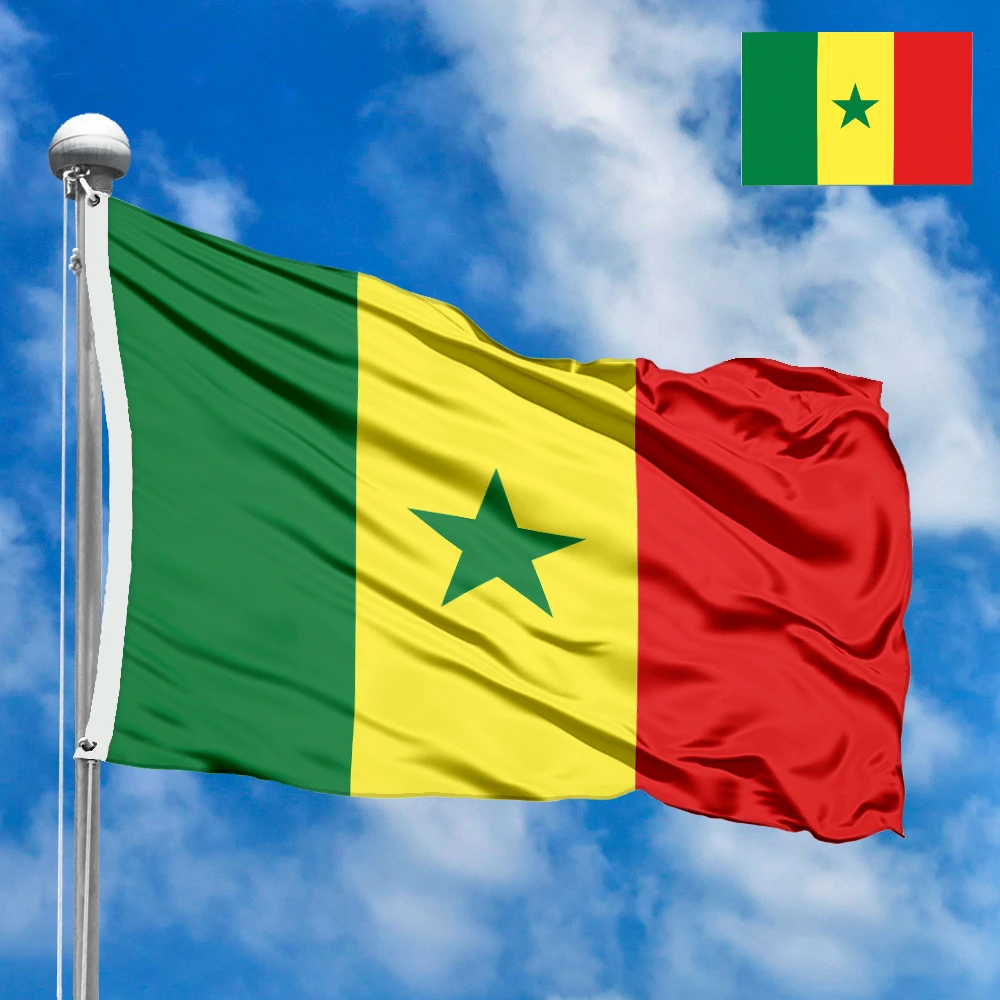

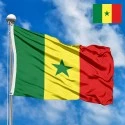
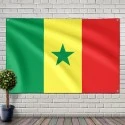
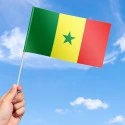
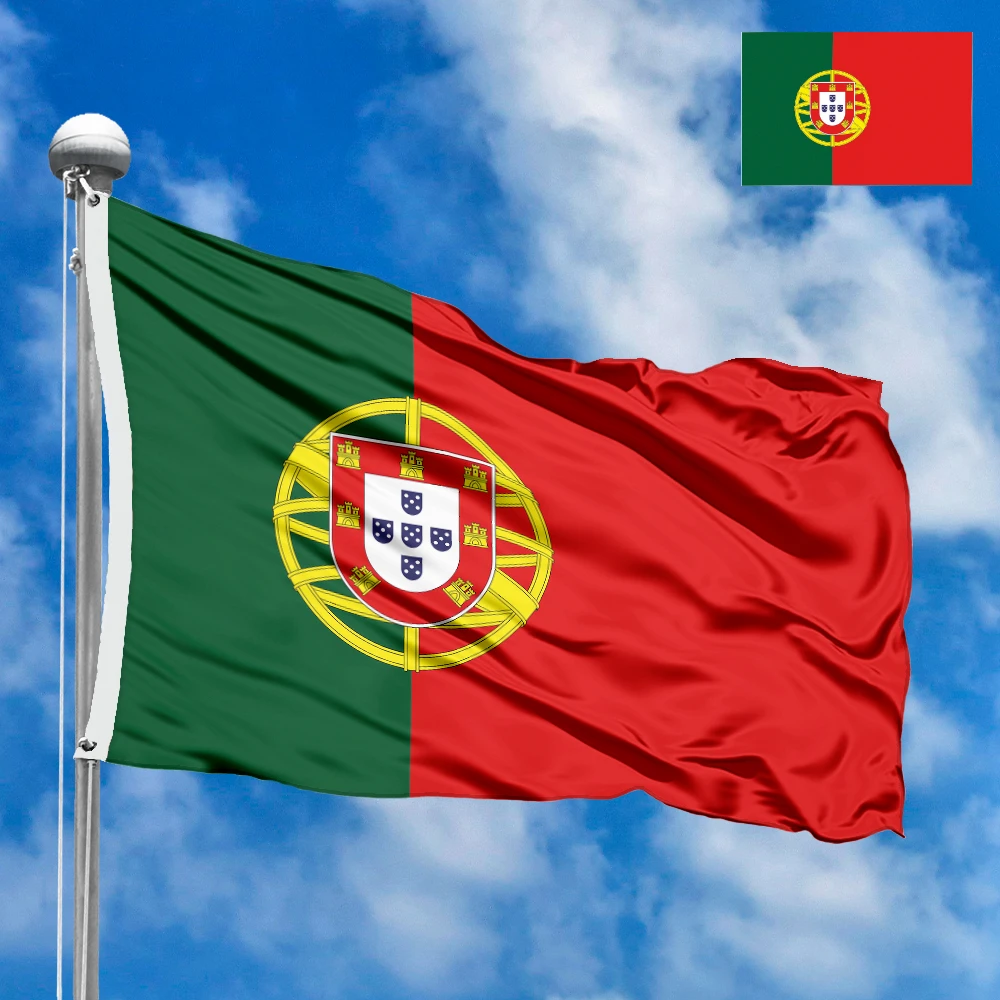

 Waving flag
Waving flag
 Sizes:
Sizes:
 Round flag
Round flag
 Sizes:
Sizes:
 Rectangular flag 2:3
Rectangular flag 2:3
 Sizes:
Sizes: